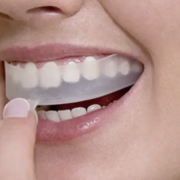A white, confident smile can also make you look younger and more attractive. Yet, most people avoid whitening their teeth because of pain and sensitivity, often caused by traditional whitening methods. The good news is that there are effective, gentle options for whitening teeth without sensitivity. This blog explores the easy ways to get a pearly, dazzling smile safely.
Understanding Tooth Sensitivity
There’s no need to endure pain and discomfort to get a brighter smile. In Canada, a wide variety of teeth whitening options are available that cater specifically to people with sensitive teeth. Teeth whitening in Toronto can access the enamel and irritate the nerves, which might be embedded in the teeth, causing sensitivity. Make sure to always seek a Dental Clinic Toronto if you have long-lasting sensitivity or dental problems before starting any whitening regimen.
1. Whitening Toothpaste for Sensitive Teeth
Whitening toothpaste is a common and convenient choice. For people with sensitive teeth, there are special formulas that combine mild abrasives with enamel- strengthening ingredients similar as potassium nitrate or stannous fluoride. Such agents also assist in desensitizing the nerves and protect the enamel from the effects of whitening.
Best practices:
- Select toothpaste marked for “sensitive teeth” and “whitening.”
- Use twice daily.
- Don’t brush too hard, as it can wear down enamel further.
2. Whitening Strips with Lower Peroxide Concentration
Over-the-counter Teeth whitening in Toronto is popular, but some varieties can create sharp, shooting sensitivity. The good news is that brands can be gentler alternatives with reduced peroxide levels. These strips gradually whiten teeth slowly to prevent discomfort.
Tips for use:
- Do not use more than once a day or every other day.
- Use as required and avoid overuse.
- Use a fluoride rinse afterward to soothe teeth.
3. LED Whitening Kits with Desensitizing Gel
Home LED whitening kits have become a popular way to achieve whiter teeth, mainly because of their ease and visible results. Many now include a desensitizing gel to protect teeth before or after the whitening treatment is performed. These systems combine gentle peroxide gel with blue LED light to whiten faster without increasing sensitivity.
Steps:
- Use desensitizing gel before whitening.
- Position the LED device as per the guidance and keep it on for 10–20 minutes.
- Rinse and do not eat acidic or staining foods afterward.
Search for kits that are enamel-safe certified and come with a desensitizing serum.
4. Oil Pulling with Coconut Oil
Some prefer natural methods, though these should be used sparingly. It doesn’t whiten immediately, but with regular use it can help prevent surface stains and gradually whiten teeth.
How to do it:
- Swish 1 tablespoon of coconut oil in your mouth for 10-15 minutes every day.
- Wash it out with warm water and brush it out as usual.
- Oil pulling is comfortable, natural, and perfect for sensitive teeth.
5. Baking Soda and Hydrogen Peroxide Paste
Nothing works quite as well as this homemade paste made from a bit of hydrogen peroxide and baking powder that will safely lift and whiten teeth over time. An occasional rinse with a diluted hydrogen peroxide (1.5–3%) can also help, but too-frequent use can damage enamel.
Directions:
- Use a sensitivity toothpaste two weeks before starting any whitening method.
- Use a soft brush and scrub for 1–2 minutes, 1–2 times a week.
Important: Avoid overuse, as regular use may weaken enamel.
6. Professional Whitening from a Dentist
For anyone who values visible results and doesn’t want to risk discomfort, professional whitening is the gold standard. Dentists are able to tailor the concentration of whitening agents and provide options such as laser whitening or custom trays with desensitizing agents.
Advantages:
- Customized to your dental health.
- Quick and dramatic results.
Note: If you have a history of tooth sensitivity, consult your dentist prior to beginning any teeth whitening regimen.
7. Whitening Mouthwashes and Chewing Gums
For maintenance or lightening, peroxide-containing mouthwashes and sugar-free whitening gums can be beneficial. Teeth Whitening Toronto offers low-risk, non-invasive choices that slowly whiten teeth to keep up the results of other treatments.
Best usage:
- Use mouthwash once daily.
- Chew whitening gum after meals to neutralize acids and prevent new stains.
Additional Tips to Prevent Sensitivity While Whitening
- Gently brush it with your soft-bristled toothbrush to prevent enamel from eroding on the bands.
- Stay away from acidic foods and beverages (such as soda and citrus fruits) during whitening.
- Use fluoride treatments or mouthwashes, which can help strengthen enamel.
- Don’t over-whiten. Allow your teeth time for a break between treatments.
- Stay hydrated—a dry mouth can increase the risk of sensitivity.
Conclusion
Teeth Whitening Toronto and professional whitening are safe and comfortable in Canada. You do not have to sacrifice comfort for whiter teeth. From specially formulated toothpaste to LED kits and professional options, there are countless ways to whiten your smile without causing sensitivity.
The trick is to opt for gentle, enamel-safe techniques and listen to your teeth. Consistency, combined with proper oral hygiene, will get you the radiant smile that you are striving for, pain-free.
Also Read:
Why Oral Health Is the Key to a Strong Immune System

















Comments